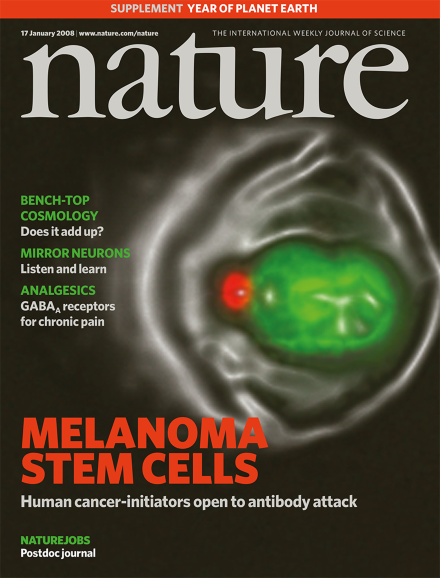Volume 451 Issue 7176, 17 January 2008
Editorial
Research Highlights
Journal Club
News
News in Brief
News
News in Brief
News Feature
Correspondence
Books & Arts
News & Views
Correction
News & Views
-
Join the dots
Collection:

